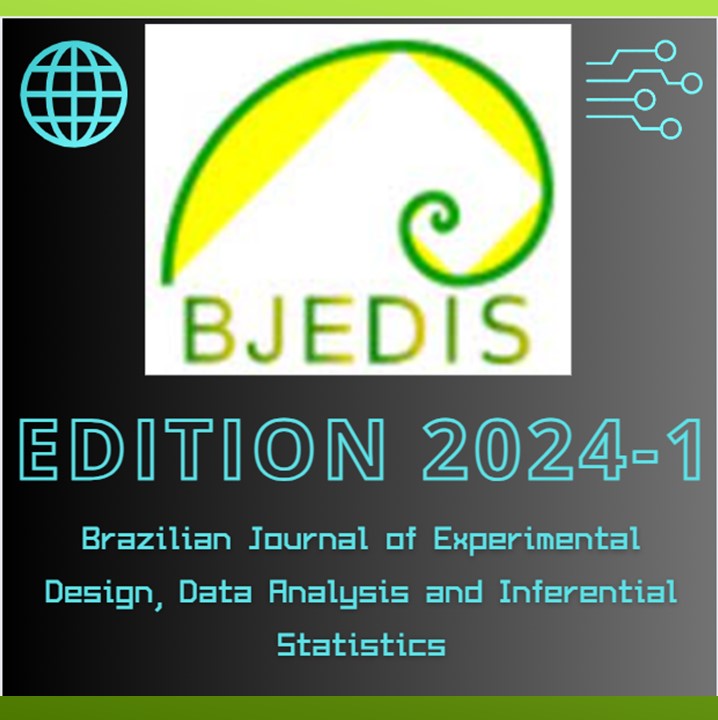Can absorbent polymers remove pesticides from the environment? A Data Mining study
DOI:
https://doi.org/10.55747/bjedis.v3i1.53345Keywords:
Pesticides, polymers, detection, absorption, Data Mining, Statistic Analysis, Data AnalysisAbstract
Pesticides are essential for improving agriculture, which is necessary for our life. Nowadays, with population growth, these chemistry products are more explored and improved to improve food production and keep people alive. However, the excessive use of herbicides, insecticides, and fungicides can degrade the environment and cause health issues. For this reason, researchers look for ways to detect and remove pesticide residues from the environment. Moreover, they provide limits on the use of agrochemical products. Modern searches about polymers and their use in science show that they can be used for pesticide detection or remotion, which is more efficient than the latest. This paper shows the main issues covered in the articles on using polymers to detect agrochemical products from the environment. These analyses were made on the platforms Scopus and Web of Science. The results concluded that the principal search focus was on detecting high-hazard pesticides using polymers.
Downloads
References
Agrotóxico. INCA - Instituto Nacional de Câncer [online]. 2018. Accessed 15 March 2022. Available from: https://www.inca.gov.br/exposicao-no-trabalho-e-no-ambiente/agrotoxicos.
Rapid removal of organic micropollutants from water by a porous β-cyclodextrin polymer | Nature. [online]. Accessed 24 June 2022. Available from: https://www.nature.com/articles/nature16185#Abs3.
YAN, Zhuojun, LIU, Jinni, MIAO, Congke, SU, Pinjie, ZHENG, Guiyue, CUI, Bo, GENG, Tongfei, FAN, Jiating, YU, Zhiyi, BU, Naishun, YUAN, Ye and XIA, Lixin. Pyrene-Based Fluorescent Porous Organic Polymers for Recognition and Detection of Pesticides. Molecules [online]. v. 27, n. 1, p. 126. 2022. DOI 10.3390/molecules27010126. Available from: https://www.mdpi.com/1420-3049/27/1/126. Accessed 15 March 2022.
LEEPHENG, Piyawan, LIMTHIN, Dalawan, HOMCHAN, Wisa, SURAMITR, Songwut and PHROMYOTHIN, Darinee. An experimental and theoretical study of molecularly imprinted electrode based on methyl methacrylate polymer for pesticide detection. Japanese Journal of Applied Physics [online]. v. 59, n. SI, p. SIIJ09. 2020. DOI 10.35848/1347-4065/ab740f. Available from: https://doi.org/10.35848/1347-4065/ab740f. Accessed 24 June 2022.
Dual-mode fluorescence and colorimetric detection of pesticides realized by integrating stimulus-responsive luminescence with oxidase-mimetic activity into cerium-based coordination polymer nanoparticles - ScienceDirect. [online]. Accessed 25 June 2022. Available from: https://www.sciencedirect.com/science/article/abs/pii/S0304389421020458.
KABAK, Burcu and KENDÜZLER, Erdal. Synthesis, characterization and adsorption/sensing applications of novel cadmium(II) based coordination polymer. Journal of Environmental Chemical Engineering [online]. v. 10, n. 3, p. 107989. 2022. DOI 10.1016/j.jece.2022.107989. Available from: https://www.sciencedirect.com/science/article/pii/S2213343722008624. Accessed 24 June 2022.
WEI, Jinchao, XUE, Yan, DONG, Jiayi, WANG, Shuangpeng, HU, Hao, GAO, Hao, LI, Peng and WANG, Yitao. A new fluorescent technique for pesticide detection by using metal coordination polymer and nanozyme. Chinese Medicine [online]. v. 15, n. 1, p. 22. 2020. DOI 10.1186/s13020-020-00304-2. Available from: https://doi.org/10.1186/s13020-020-00304-2. Accessed 24 June 2022.
DE MORAES, Rodrigo Fracalossi. AGROTÓXICOS NO BRASIL: PADRÕES DE USO, POLÍTICA DA REGULAÇÃO E PREVENÇÃO DA CAPTURA REGULATÓRIA. . P. 84.
Quem criou o termo “agrotóxico” e por que não “pesticida” ou “defensivo agrícola.” G1 [online]. Accessed 23 March 2022. Available from: https://g1.globo.com/economia/agronegocios/noticia/2019/10/07/quem-criou-o-termo-agrotoxico-e-por-que-nao-pesticida-ou-defensivo-agricola.ghtml.
Legislação — Português (Brasil). [online]. Accessed 15 March 2022. Available from: https://www.gov.br/agricultura/pt-br/assuntos/insumos-agropecuarios/insumos-agricolas/agrotoxicos/legislacao.
Downloads
Published
Issue
Section
License
Copyright (c) 2024 Brazilian Journal of Experimental Design, Data Analysis and Inferential Statistics

This work is licensed under a Creative Commons Attribution 4.0 International License.
AUTHORS’ DECLARATION AND COPYRIGHT TRANSFER AGREEMENT
The undersigned authors hereby declare that the submitted manuscript is an original work and has not been previously published or submitted, in whole or in part, to any other journal. The authors further commit not to submit this work to any other journal while it is under consideration by BJEDIS.
We affirm that the manuscript is free from plagiarism, and we accept full responsibility for any allegations of academic misconduct that may arise.
By submitting this manuscript, the authors irrevocably transfer all copyrights of the work—including, without limitation, the rights of reproduction, distribution, translation, and public communication in any form or medium—to BJEDIS. Any breach of this agreement may result in legal action in accordance with the Brazilian Copyright Law (Law No. 9.610 of February 19, 1998).
The authors also declare that there are no conflicts of interest related to this work. All sources of financial support have been properly acknowledged in the funding section of the manuscript.



